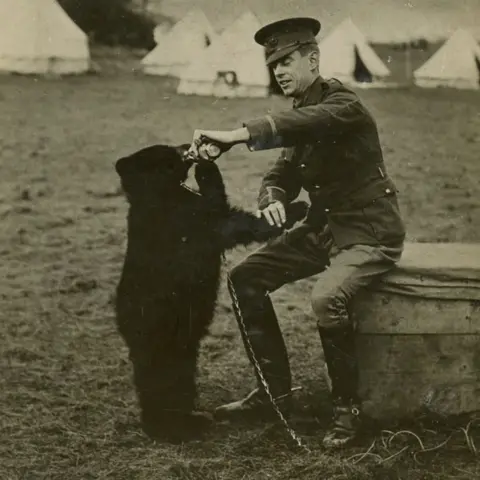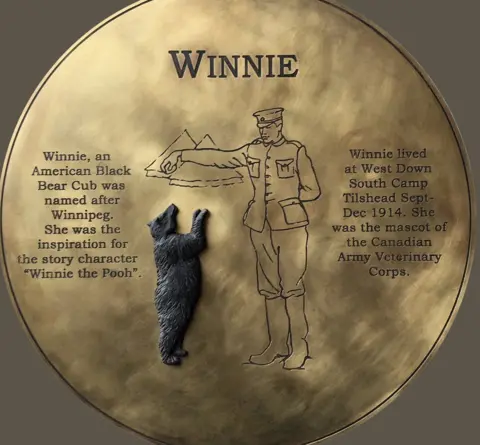Winnie the black bear: Plaque for real life Pooh bear
 Lindsay Mattick
Lindsay MattickA plaque has been unveiled to mark a village's connection with the real life bear that inspired Winnie-the-Pooh.
Winnie the black bear was brought to England in 1914 by a Canadian vet who had rescued the animal and named her after his hometown of Winnipeg.
She was later sent to London Zoo, where AA Milne's son Christopher Robin saw her and named his teddy bear after her.
A plaque has been unveiled in the village of Tilshead, near the WW1 camp on Salisbury Plain where she lived.
The bear's owner, Lt Harry Colebourn, was a vet from Canada who had enlisted at the outset of World War One and travelled to Europe to help care for horses during the war.

He bought the orphaned bear cub for $20 after he spotted her on a railway platform in Ontario as he was about to leave for duty.
Winnie became the regimental mascot of the Canadian Army Veterinary Corps, which trained at West Down South Camp, close to Tilshead, before being sent to France in 1914.
When Lt Colebourn was shipped over to France he sent Winnie to stay at London Zoo.
He planned to take the bear back to Canada but when he saw how much children loved visiting Winnie at the zoo, he donated her permanently.
Christopher Robin regularly visited her at the zoo and the teddy bear he renamed after her became the inspiration for the much loved character in AA Milne's books, written in the 1920s, and subsequent Disney films.
The plaque was unveiled at Tilshead village hall.
